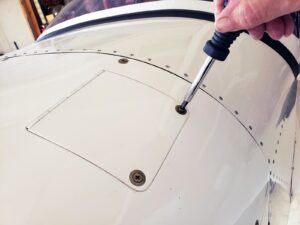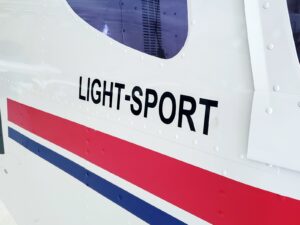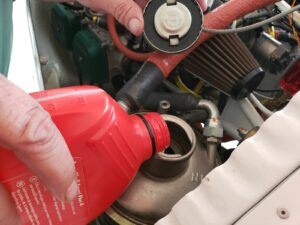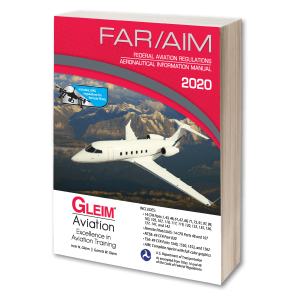 Do you know what type of preventive maintenance you can do on the aircraft you own or operate? If you’re in flight training, you’ll likely need to talk about it with your examiner, but if it’s been a while, or if you rent and preventive maintenance is handled by the mechanics, it is important to recognize what pilots are allowed to do when it comes to preventive maintenance.
Do you know what type of preventive maintenance you can do on the aircraft you own or operate? If you’re in flight training, you’ll likely need to talk about it with your examiner, but if it’s been a while, or if you rent and preventive maintenance is handled by the mechanics, it is important to recognize what pilots are allowed to do when it comes to preventive maintenance.
What is preventive maintenance?
In 14 CFR Part 1.1, the FAA defines preventive maintenance as “simple or minor preservation operations and the replacement of small standard parts not involving complex assembly operations.” The tasks meeting this definition are limited to a list of specific operations described in 14 CFR Part 43, Appendix A, Paragraph (c). Some of which include replacing fuel or oil strainers, cleaning and greasing landing gear wheel bearings, and replenishing hydraulic fluid. The list also includes operations you may not be aware of – replacing spark plugs, replacing fuel lines, or repairing landing gear tires.
Who may perform preventive maintenance?
 In addition to FAA-certificated repair stations, mechanics, and persons working under their supervision, owners and pilots are allowed to perform preventive maintenance according to 14 CFR 43.3(g). A pilot certificated under 14 CFR Part 61 may perform preventive maintenance on any aircraft they own or operate under 14 CFR Part 91. One exception is sport pilots who are limited to aircraft that are issued a special airworthiness certificate in the light sport category they own or operate.
In addition to FAA-certificated repair stations, mechanics, and persons working under their supervision, owners and pilots are allowed to perform preventive maintenance according to 14 CFR 43.3(g). A pilot certificated under 14 CFR Part 61 may perform preventive maintenance on any aircraft they own or operate under 14 CFR Part 91. One exception is sport pilots who are limited to aircraft that are issued a special airworthiness certificate in the light sport category they own or operate.
Who may approve an aircraft for return to service after preventive maintenance?
All Aircraft
The holder of at least a private pilot certificate may approve an aircraft for return to service after performing preventive maintenance. Note that a pilot with a 14 CFR Part 61 certificate below private (e.g. a recreational pilot) can perform preventive maintenance on their own aircraft but cannot approve it for return to service.
Aircraft issued a special airworthiness certificate in the light-sport category
 The holder of a sport pilot certificate may approve a light-sport aircraft for return to service after performing preventive maintenance. Note that the holder of a light-sport aircraft repairman certificate with a maintenance rating may approve a light-sport aircraft for return to service under the provisions of 14 CFR Part 65.
The holder of a sport pilot certificate may approve a light-sport aircraft for return to service after performing preventive maintenance. Note that the holder of a light-sport aircraft repairman certificate with a maintenance rating may approve a light-sport aircraft for return to service under the provisions of 14 CFR Part 65.
Is a logbook entry required after preventive maintenance?
When the work is completed satisfactorily, a logbook entry that includes the following information is required, per 14 CFR 43.9:
- A description of the work performed indicating how it was accomplished by referencing documents acceptable to the FAA, such as manufacturer’s manuals and FAA Advisory Circulars.
- The date the work was completed.
- The signature, certificate number, and kind of certificate held by the person approving the work. The signature constitutes an approval for return to service and can only be the holder of the pilot’s certificate who performed the work.
To what standard is preventive maintenance held?
All preventive maintenance must be performed using methods, techniques, and practices acceptable to the FAA. This information can usually found in the manufacturer’s maintenance documents or FAA Advisory Circulars. Any person performing preventive maintenance must use the tools and equipment necessary to ensure the work is performed and tested to acceptable standards. Tools and test equipment are required to be calibrated if used for performing tasks to specific standards.
What type of preventive maintenance can be performed?
 According to the regulations, there are quite a few operations permitted. The following is a partial list of what a certificated pilot who meets the conditions in 14 CFR Part 43 can do:
According to the regulations, there are quite a few operations permitted. The following is a partial list of what a certificated pilot who meets the conditions in 14 CFR Part 43 can do:
- Remove, install, and repair landing gear tires.
- Service landing gear wheel bearings (for example, cleaning and greasing).
- Service landing gear shock struts (for example, adding oil, air, or both).
- Replace defective safety wire or cotter keys.
- Lubricate items not requiring disassembly other than removal of nonstructural items (for example, cover plates, cowling, and fairings).
- Replenish hydraulic fluid in the hydraulic reservoir.
- Apply preservative or protective material to components where no disassembly of any primary structure or operating system is involved, and where such coating is not prohibited or contrary to good practices.
- Replace safety belts.
- Replace bulbs, reflectors, and lenses of position and landing lights.
- Replace or clean spark plugs and set spark plug gap clearance.
- Replace any hose connection, except hydraulic connections.
- Replace and service batteries.
- Make simple fabric patches not requiring rib stitching or the removal of structural parts or control surfaces. (Note: For balloons, this includes making small fabric repairs to envelopes as defined in, and in accordance with, the balloon manufacturer’s instructions and which do not require load tape repair or replacement.)
 Replace any cowling not requiring removal of the propeller or disconnection of flight controls.
Replace any cowling not requiring removal of the propeller or disconnection of flight controls.
For a complete list, see 14 CFR Appendix A to Part 43 – Major Alterations, Major Repairs, and Preventive Maintenance.
Now that you are aware of the type of maintenance you are legally allowed to do as a pilot, will you see your aircraft differently during your preflight? To follow along with the regulations quoted in this article, grab a copy of the latest FAR/AIM edition.
Written by: Clay Gamber (Aviation Editor, A&P, IA, ATP), Paul Duty (Chief Instructor, CFI, CFII, MEI), and Ryan Jeff ( Aviation Editor, CFI, AGI)

